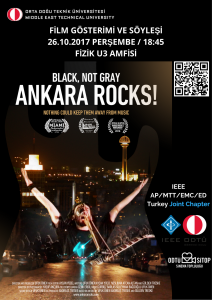22 December 2017 (13:40): IEEE AP/MTT/EMC/ED Turkey Seminar Series (S.21)
Speaker: Prof. Gönül Turhan-Sayan, Middle East Technical University
Topic: “Metamaterial Research with Applications in Microwave, Terahertz and Infrared Bands”
Location: Middle East Technical University, Ankara, Turkey
Abstract: Metamaterials (MTMs) are specially engineered periodical resonant structures, which are composed of conductors and dielectrics commonly found in nature, but possess quite unusual characteristics not displayed by natural materials, such as negative or almost zero permittivity and/or permeability. The possibility of metamaterials and their basic design principles were introduced 50 years ago by the Russian scientist, V.G. Veselago, in his 1968 paper. After a silent period of about 30 years, the research on the theory and applications of metamaterials became very popular in physics, electrical engineering and material science with a huge number of publications exceeding 10.000 papers annually. Magnetically and/or electrically excited metamaterial unit cell arrays were firstly demonstrated in microwave frequencies, in early 2000’s. Then, the MTM research studies have been extended to Terahertz (THz) and infrared (IR) bands over the last decade. Since 2007, I have been doing research at METU with my graduate students on the design and applications of metamaterials, having completed 3 Master Theses and 3 PhD Theses so far, resulting in 15 journal papers and more than 30 conference papers. In my presentation, I will summarize our results in metamaterial research reporting multi- frequency or wideband MTM structures, including adjustable or reconfigurable topologies, with various applications ranging from resonators, filters, antennas and absorbers to sensors in RF, THz and IR bands.
Bio: Dr. Gönül Turhan-Sayan received her B.S. and M.S. degrees from the Middle East Technical University (METU), Ankara, Turkey, and her Ph.D. degree from the Ohio State University (OSU), Columbus, Ohio, USA, all in electrical engineering. During her PhD studies, she was a Fulbright Scholar from 1983 to 1984. Then, she worked for the ElectroScience Laboratory at OSU as a graduate research associate from 1984 to 1988. Dr. Turhan-Sayan was a consultant and subcontractor for the Electromagnetics and Optics Divisions of the Battelle Memorial Institute, Columbus, Ohio, USA from 1988 to 1992. She joined METU in 1992 as an assistant professor and became a full professor in 2003. She served as the Chairperson of the Department of Electrical and Electronics Engineering from 2013 to 2016, and as the Vice President of METU from 2016 to August, 2017. Her professional interests include transient electromagnetics; target detection and physics-based identification techniques for ultra-wideband (UWB) radar systems; mine and IED (Improvised Explosive Devices) detection by GPRs; UWB radar signal processing; design and applications of metamaterials in microwave, Terahertz and infrared bands; distributed fiber optical sensors and optical surface plasmon resonance sensors. Dr. Turhan-Sayan is a senior member of IEEE since 2004.
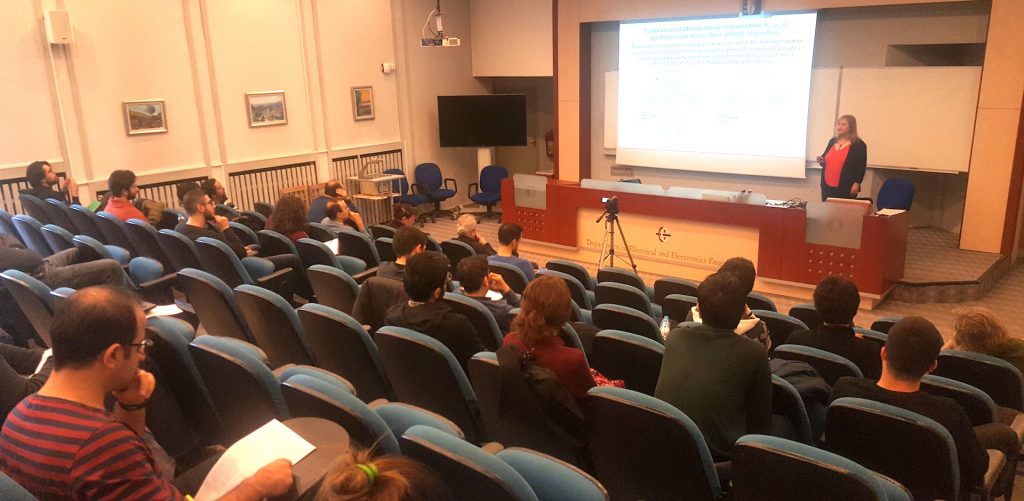
vTools Link: https://events.vtools.ieee.org/m/157224
15 December 2017 (13:40): IEEE AP/MTT/EMC/ED Turkey Seminar Series (S.20)
Speaker: Prof. Ergin Atalar, Bilkent University
Topic: “Magnetic Resonance Imaging Technologies”
Location: Middle East Technical University, Ankara, Turkey
Abstract: Magnetic resonance (MR) imaging technology, which was introduced more than 40 years ago, plays an important role in the diagnosis of many diseases today. MR imaging is based on the principle of nuclear magnetic resonance and provides images with high tissue contrast. There are four basic components of this technology: (1) a magnet that can apply a high and uniform magnetic field to the entire body; (2) a gradient coil that perturbs the magnetic field as a function of time and position; (3) a coil that provides radio-frequency power to the entire body, and (4) the receivers that receive the very weak echo signal from the body. In my research group, we are working on last three components of this device. In my presentation, I will briefly go over the technologies that we are working in collaboration with the investigators at ASELSAN.
Bio: Dr. Ergin Atalar has received BS degree from Boğaziçi University, MS degree from Middle East Technical University and PhD degree from Bilkent University, all from the Electrical and Electronics Engineering departments of these schools. He joined the Johns Hopkins University in 1991 as postdoctoral fellow and became a professor of Radiology, Biomedical Engineering, Electrical and Electronics Departments before his departure to Bilkent. He is the founder of the National Magnetic Resonance Research (UMRAM) and Aysel Sabuncu Brain Research Centers. Dr. Atalar co-founded MRI Interventions Inc and Troyka Med. He published over 100 publications in peer reviewed journals and 46 US patents. According to ISI web of knowledge 2017 data, his publications received over 4000 and his h-index is 36. He received TUBITAK Science Award. He is fellow of ISMRM and National Academy of Inventors and member of “Bilim Akademisi” and Academia Europaea.
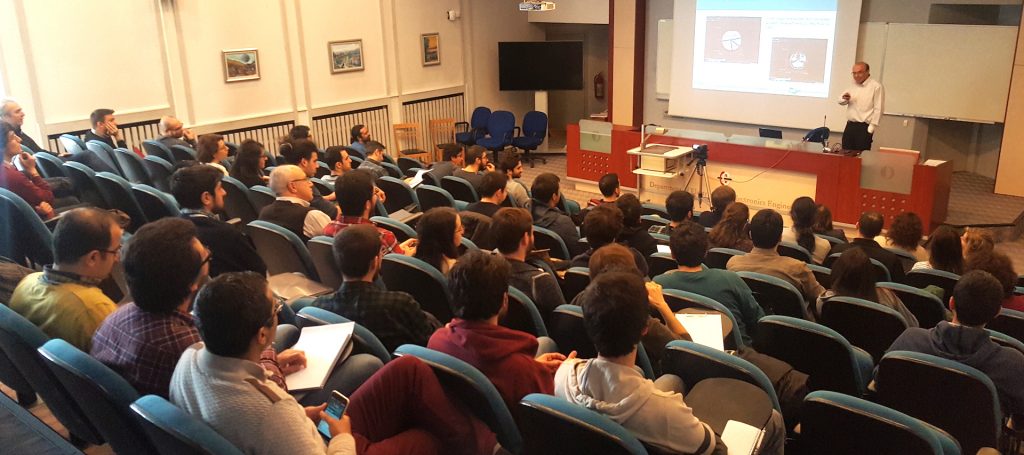
vTools Link: https://events.vtools.ieee.org/m/155399
08 December 2017 (13:40): IEEE AP/MTT/EMC/ED Turkey Seminar Series (S.19)
Speaker: Assoc. Prof. Mehmet Ünlü, Ankara Yıldırım Beyazıt University
Topic: “Tera-Nano: Novel Terahertz Components Using Nanotechnology”
Location: Middle East Technical University, Ankara, Turkey
Abstract: The research on the so-called “terahertz gap”, which includes the wavelengths between 30‑3000 µm of the electromagnetic spectrum, have attracted significant attention in the past two decades. Laying between the infrared and millimeter-wave wavelengths, the terahertz waves bring unique behavior that can be achieved neither with infrared, nor with millimeter-wave wavelengths, offering novel applications in medical imaging, spectroscopy, and high-speed communications. The terahertz waves can penetrate all the materials except for water and metals, while they can propagate on a light line with minimal spreading, just like the infrared waves, thanks to their small wavelengths. With these combined properties, unprecedented applications such as high-resolution imaging behind obstacles, remote detection of explosives and other materials using spectroscopy, and very high-speed wireless communications (>100 Gbps) become possible using terahertz waves.
Bio: Mehmet Unlu received his B.Sc., M.Sc., and Ph.D. degrees in Electrical and Electronics Engineering from Middle East Technical University, Ankara, Turkey in 2001, 2003, and 2009, respectively. He served as a research scientist at Cornell University Nanoscale Science and Technology Facility, Ithaca, NY for Utah State University, Logan, UT between 2009 and 2011. He joined the University of Michigan, Ann Arbor, MI in 2011 as a postdoctoral research fellow. Since 2012, he is serving as a faculty member at Ankara Yildirim Beyazit University, Ankara, Turkey. His major research interests are the terahertz technology, plasmonics, optoelectronics, and NEMS.
Dr. Unlu received the “TUBITAK Ph.D. Scholarship” between 2003 and 2009, the “Prof. Mustafa N. Parlar Education and Research Foundation-METU Thesis of the Year Award” in 2009 for his Ph.D. dissertation, “Best Student Paper Award (2nd place) in IEEE International Symposium on Antennas and Propagation” and “Best Student Paper Award (3rd place) in IEEE International Microwave Symposium” in 2013, “Prof. Mustafa N. Parlar Education and Research Foundation Research Encouragement Award” in 2013, “International Union of Radio Science (URSI) Young Scientist Award” in 2014, and “Turkish Academy of Sciences Outstanding Young Scientist Award” in 2015.
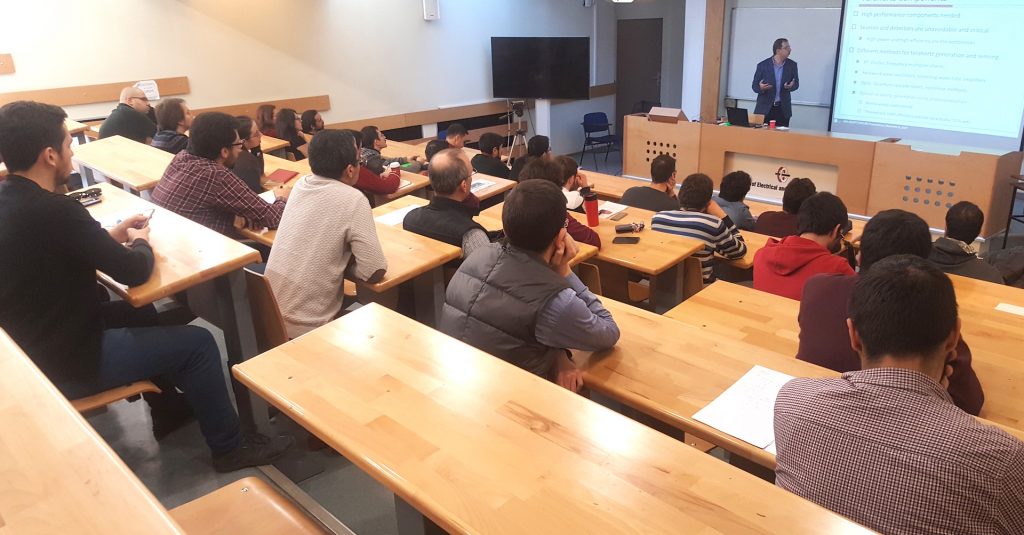
vTools Link: https://events.vtools.ieee.org/m/155191
01 December 2017: IEEE AP/MTT/EMC/ED Turkey Seminar Series (S.18-2)
Lecturer: Prof. Jan Machac, Czech Technical University in Prague
Topic: “Substrate Integrated Waveguide – Base for Leaky Wave Antennas”
Location: Middle East Technical University, Ankara, Turkey
Abstract: Antennas designed on the substrate integrated waveguide have a planar structure, and can be easily fabricated by a standard PCB technology, so they are suitable for cheap mass production. The lecture presents the results of an investigation of leaky wave antennas designed on a substrate integrated waveguide. The interest is given to three antenna types: an antenna radiating from a wide longitudinal slot etched in the top waveguide wall, a SIW CRLH leaky wave antenna, and a dual band SIW CRLH leaky wave antenna. These two later antennas radiate through meander slots etched in the top metallization which serve as series capacitors added to design the CRLH transmission line.
Bio: Jan Machac, Senior Member IEEE, is a professor at the Department of Electromagnetic Field, Faculty of Electrical Engineering, Czech Technical University in Prague. His main scientific interests are: investigation of planar passive elements and subsystems of microwave technology, planar antennas, planar microwave filters, propagation of electromagnetic waves in periodic structures, metamaterials. Prof. Macháč is an author or co-author of more than 250 publications in scientific journals and scientific international and national conferences.
Jan Machac is:
Member of the MTT Society AdCom Membership and Geographic Activities Committee
MTT-S Region 8 Coordinator
Member of the IEEE MTT-S Int. Microwave Symp. TPRC, since 2008.
Member of the TPC of the European Microwave Conference, 1995-1997, and since 2013.
Reviewer of: IEEE Transactions on Microwave Theory and Techn., IEEE Microwave and Wireless Components Letters, Electronics Letters, IET Microwave Antennas & Propagation.
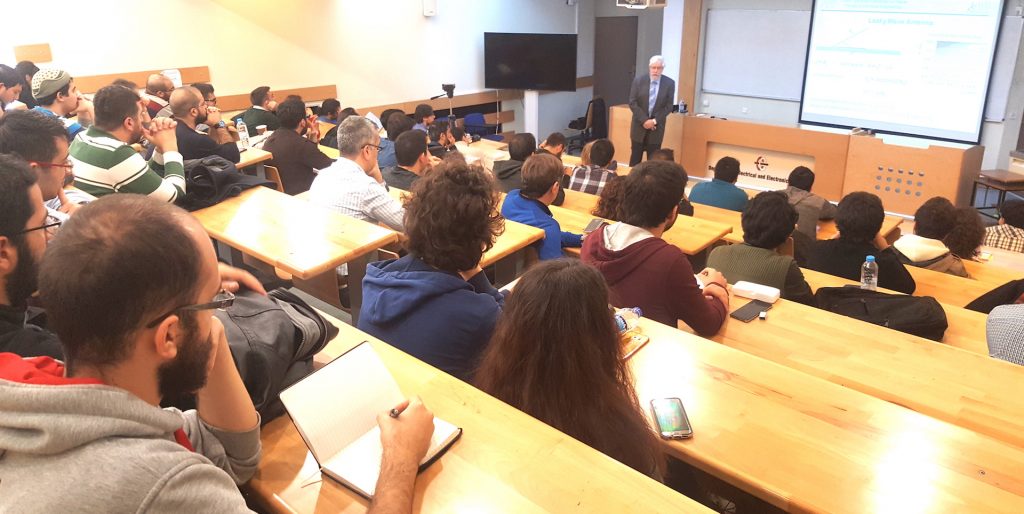
vTools Link: https://events.vtools.ieee.org/m/154832
30 November 2017: IEEE AP/MTT/EMC/ED Turkey Seminar Series (S.18-1)
Lecturer: Prof. Jan Machac
Topic: “Substrate Integrated Waveguide – Base for Leaky Wave Antennas”
Location: Bilkent University, Ankara, Turkey
vTools Link: https://events.vtools.ieee.org/m/154831
24 November 2017 (13:40): IEEE AP/MTT/EMC/ED Turkey Seminar Series (S.17)
Speakers: Barış DİNÇ (Technical Vice President – TAMSAT) and Burcu Aybak (General Secretery – TAMSAT)
Topic: “Details of a Low Earth Orbiting (LEO) Cubesat’s Subsystems”
Location: Middle East Technical University, Ankara, Turkey
Abstract: LEO Satellites which are known as CubeSats; have very common usage to investigate the low orbit conditions for research applications of R&D companies; and the development of space technologies, from elementary schools to the universities. Technical experiments and valuable applications are possible in the space conditions. The tests can be started and the results are transferred to the earth by the use of telemetry transceivers in amateur communication bands, which are coordinated by International Amateur Radio Union. Depending to the communication bands; one can also use developed imaging methods to transfer the images of the tests back to earth. If one uses bigger satellites these operations may be very costly. In this presentation, TAMSAT will present the CubeSat satellite structures and the subsystems, orbit’s characteristics, satellite sizes, weights, and ground stations, single and constellation projects and minimum required boards in one CubeSat and the auxiliary boards or payloads will also be mentioned. Followers will also have, the knowledge of TAMSAT’s capabilities; past experiences and future projects.
Bio: Barış Dinç graduated from Ankara University Electronics Engineering Department in 1996. After working in many countries he returned to Turkey and started working for HAVELSAN A.Ş. in 2000. He worked as a system architect for e-goverment projects ( UYAP e-justice, Turkey Election System, land registry and cadastrate systems, Peace Eagle Airborne Early Warning System, City Surveillance and Border Security, mini drones and perimeter security, etc. ). In 2014 he started working in ONUR A.S. as an Engineering Manager and focused on Air Traffic Control Systems, Radio Over IP and IP Over Radio topics. He had master trials in Electronics, Informatics, Astronomy and Space Sciences. His interests are mainly focused on Radio Frequency communication and micro/pico satellites. He is a member and vice president of TAMSAT to spread information and educate young people for satellite technologies. He had these publications on this topics: Development of a LEO communication CubeSat (IEEE 2013), Distributed Light Weight Time Synchronization for Wireless Sensor Networks (IEEE 2015), Design and implementation of a wireless sensor network based Critical Infrastructure monitoring system (IEEE 2016)
Bio: Burcu Aybak is currently working for Onur Mühendislik A.Ş. as Software Team Leader. She was graduated from Hacettepe University Mathematics Department in 2011. She started working for AKIN INC in 2008. She worked as a software engineer on Turkish Web Search Engine and Full Text Search Digital Library projects. In 2012 she started working in ONUR A.S. as a Software Engineer and focused on Air Traffic Control Systems, Radio Over IP and IP Over Radio topics. She is a master student in Computer Animation and Game Technologies, Hacettepe University. Her master thesis subject is A Serious Game Study To Teach Turkish Sign Language With Virtual Reality. Her interests are mainly focused on virtual reality, machine learning, robotics, Radio Frequency communication, micro/pico satellites. She is a member and general secretary of TAMSAT to learn and share technologies with all interested people.
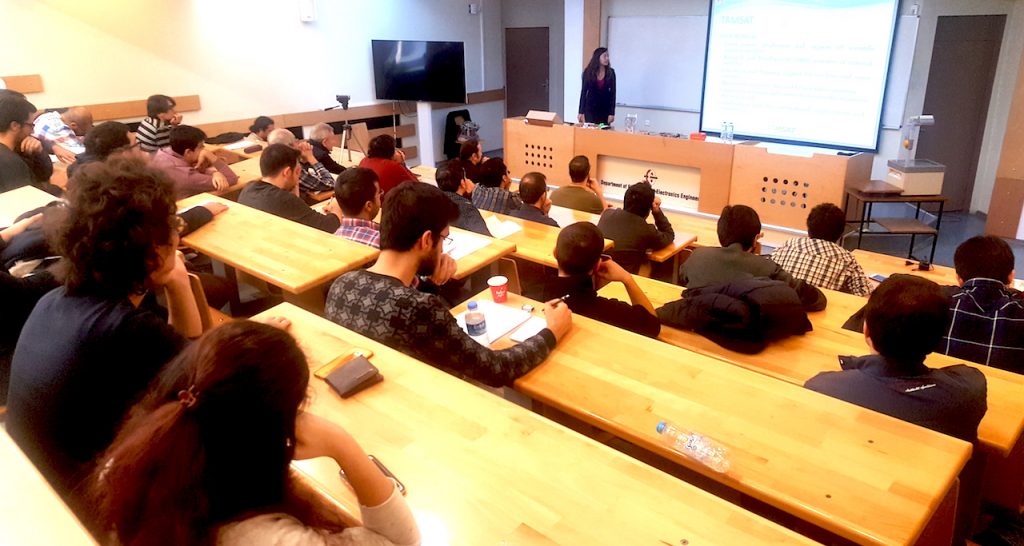
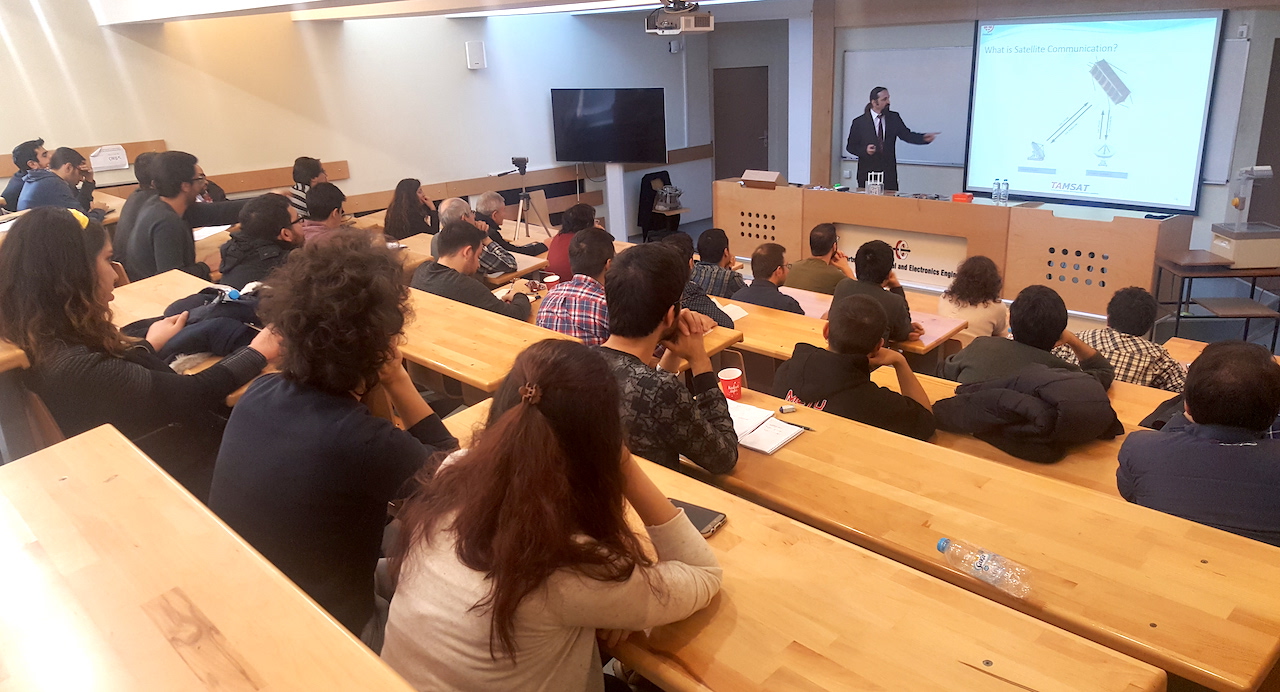
vTools Link: https://events.vtools.ieee.org/m/154285
17 November 2017 (13:40): IEEE AP/MTT/EMC/ED Turkey Seminar Series (S.16)
Speaker: Assoc. Prof. Özgür Özdemir, Istanbul Technical University
Topic: “Microwave Imaging in Layered Media”
Location: Middle East Technical University, Ankara, Turkey
Abstract: Microwave imaging of buried targets in inhomogeneous/layered media have been a very important research area due to its wide range of applications: biomedical applications, through wall surveillance, nondestructive testing in material science, etc. Most of the developed imaging methods require the knowledge of the background Green’s function which may be very costly. This is particularly the case for non-smooth-interfaced and/or stratified media where the Green’s function can only be calculated numerically. This would dramatically increase the computational cost of the methods and therefore constitutes one of their main drawback for this background configuration.
In this talk, we will present our recent work on efficient microwave imaging techniques for layered medium problems. We have developed a new formulation of the scattering problem,i.e, Cauchy Data formulation which does not entail the Green’s function of the background and applied to conventional imaging algorithms to improve their numerical efficiency and accuracy as well.
Bio: Özgür Özdemir is currently associate professor of Electronics and Communication Engineering at Istanbul Technical University (ITU). She received BS and MS degrees from Istanbul Technical University, in 1998 and 2000, respectively and Ph.D. degree in electrical engineering from New Jersey Institute of Technology (NJIT) in 2005. She then joined Centre de Mathématiques Appliquées (CMAP), Ecole Polytechnique as a postdoctoral fellow. In 2008, she has returned back to ITU as a faculty member of Department of Electronics and Communication Engineering. She is currently conducting research on microwave and acoustics imaging techniques for medical imaging, through wall imaging radar, antenna design and thermoacoustic imaging for breast cancer detection.
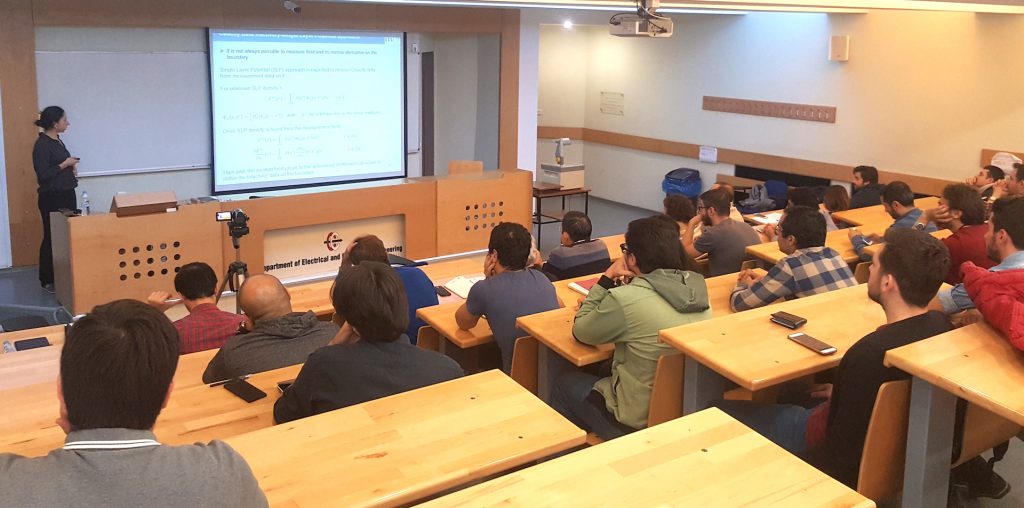
vTools Link: https://events.vtools.ieee.org/m/154283
03 November 2017 (13:40): IEEE AP/MTT/EMC/ED Turkey Seminar Series (S.15)
Speaker: Prof. Oğuz Gülseren, Bilkent University
Topic: “My Journey in the Flatland”
Location: Middle East Technical University, Ankara, Turkey
Abstract: Two-dimensional (2D) materials are expected to become key components for not only electronic devices but also for energy storage applications including super capacitors and batteries as well as novel applications because of their exotic properties. Fully understanding of most of material properties needs an atomistic description from quantum mechanics. This is also true even for explaining experimental data, especially for the systems involving nanostructures. To this end, we present the investigation of several state-of-the-art systems from first-principles calculations based on the density functional theory. Examples will include battery applications as in Mo2C as a high capacity anode material, peculiar piezoelectric properties of various 2D systems, friction of sliding of graphene or transition metal dichalcogenide layers, and layered perovskites for solar cells.
Bio: Oğuz Gülseren is a Professor of Physics at Bilkent University, Ankara, Turkey. After graduating from Ankara Science High School, he received B. Sc. from Electronics and Electrical Engineering Department of Middle East Technical University, Ankara, Turkey (July 1986). After then, he completed his M. Sc (February 1988) and Ph.D. (July 1992) in physics from Bilkent University, Ankara, where he worked on the electronic structure of low dimensional semiconductor systems. After then, he worked at SISSA-Italy (Nov. 1992 to Apr. 1995), ICTP-Italy (Nov. 1994 to Apr. 1995), Bath University-UK (Apr. 1995 to Mar. 1998), Carnegie Institution of Washington-USA (Mar. 1998 to Aug. 1999), and University of Pennsylvania and NIST-USA (Aug. 1999 to Aug. 2002). Eventually, he joined Department of Physics, Bilkent University at Sept. 2002. His current research interests include properties of nanostructures like graphene, nanotubes, nanowires, novel 2D materials, theory of self-assembly and self-organization, dye sensitized and perovskite solar cells, atomic scale friction and biomimetic adhesion from first principles calculations. He has coauthored around 90 refereed papers with an h-index 26. He has received TÜBİTAK- TWAS (Third World Academy of Science) young scientist award (2003), and İstanbul University science award (2002). He was an associate member of the Abdus Salam International Center for Theoretical Physics, ICTP, Trieste, Italy for the period 2005-2010. He had been elected as associate member of Turkish Academy of Sciences, TÜBA between 2006 and 2012, and has been elected full member of Science Academy, Istanbul since 2012. He is the recipient of the 2016 TÜBİTAK Science Award.
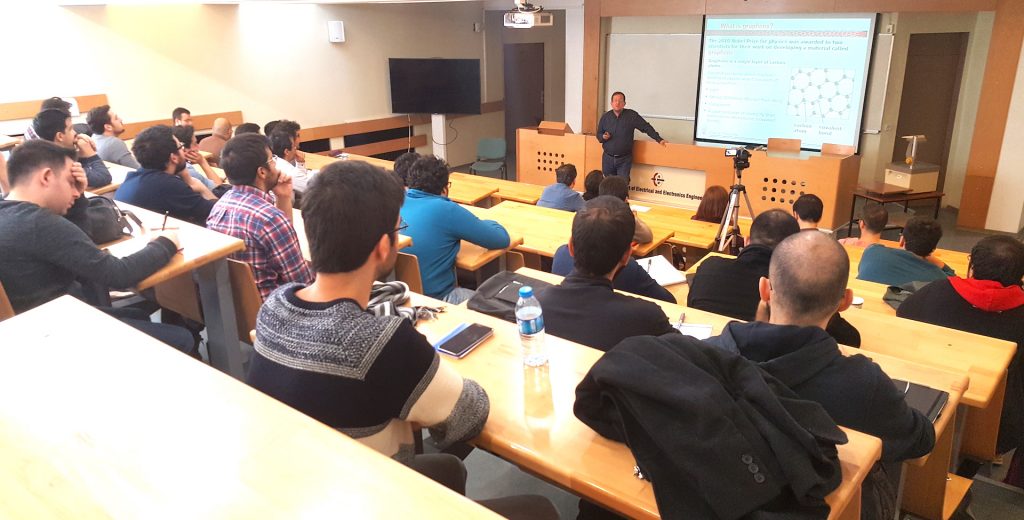
vTools Link: https://events.vtools.ieee.org/m/153342
27 October 2017 (13:40): IEEE AP/MTT/EMC/ED Turkey Seminar Series (S.14)
Speaker: Asst. Prof. Emine Ülkü Sarıtaş, Bilkent University
Topic: “Magnetic Particle Imaging: Applications and Magnetic Field Safety Limits”
Location: Middle East Technical University, Ankara, Turkey
Abstract: Magnetic Particle Imaging (MPI) is a new biomedical imaging modality, first introduced in 2005. MPI uses the nonlinear magnetization response of superparamagnetic iron oxide (SPIO) tracers to image their spatial distribution. Because human tissue does not exhibit a similar response, it is completely transparent in MPI images. This desirable feature makes MPI a very high contrast tracer imaging modality. Since its first introduction, MPI has evolved rapidly in terms of both hardware development and image reconstruction schemes, and has found important applications such as angiography, stem cell imaging, and cancer imaging. The first part of this presentation will introduce the imaging principles of MPI and its potential applications, in the light of our MPI efforts in National Magnetic Resonance Research Center (UMRAM) of Bilkent University.
MPI utilizes low-range RF frequencies (e.g., 10-150 kHz) for imaging. The magnetic field amplitudes, and thereby the imaging speed, are restricted by human peripheral nerve stimulation (PNS) thresholds. The second part of this talk will focus on these safety concerns and will present the results of our extensive human-subject experiments.
Bio: Dr. Saritas graduated with B.S. degree in Electrical and Electronics Engineering from Bilkent University in 2002. She was awarded the Lucent Technologies Stanford Graduate Fellowship for her graduate studies at Stanford University, at the Department of Electrical Engineering. There, she received her M.S. and Ph.D. degrees in 2004 and 2009, respectively. She then joined the Department of Bioengineering at University of California Berkeley, as a Siebel Stem Cell Institute Postdoctoral Fellow. Dr. Saritas has joined Bilkent University in September 2013. She is the recipient of the 2015 “Young Scientist Outstanding Achievement Award” (GEBIP) given by the Turkish Academy of Sciences (TÜBA), the 2016 “Young Scientist Award” (BAGEP) given by the Science Academy (Bilim Akademisi). Dr. Saritas is currently serving as an Associate Editor for IEEE Transactions on Medical Imaging, and as an Editorial Board Member for Nature Scientific Reports.
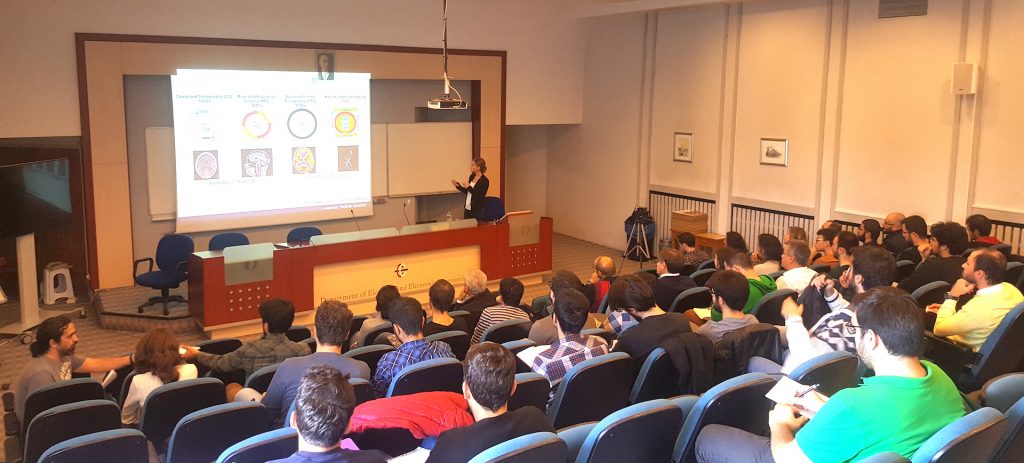
vTools Link: https://events.vtools.ieee.org/m/152903
26 October 2017 (18:45): IEEE AP/MTT/EMC/ED 2017 Social Event (SE.1)
Movie Screening
Title: Black, Not Gray: Ankara Rocks!
Director and Producer: Ufuk Önen (IMDB: http://www.imdb.com/title/tt4794832)
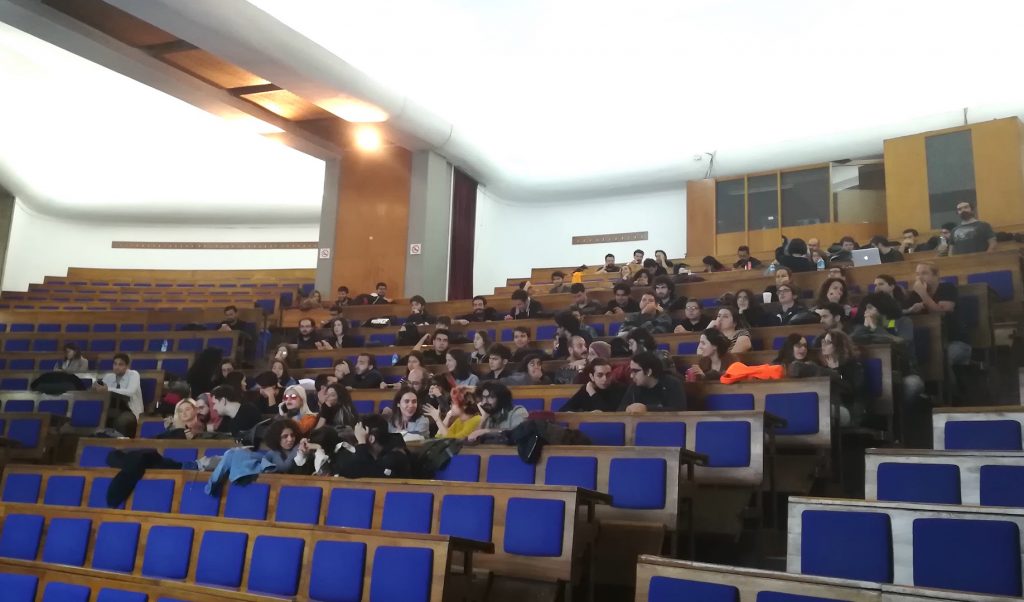
vTools Link: https://events.vtools.ieee.org/m/152902
20 October 2017 (13:40): IEEE AP/MTT/EMC/ED Turkey Seminar Series (S.13)
Speaker: Dr. Alper Sinan Akyürek, ASELSAN
Topic: “Optimal Control in the Smart City”
Location: Middle East Technical University, Ankara, Turkey
Abstract: Once a dream, currently a massive reality; the Internet of Things is here, and it is growing. In such a massive connected environment, developing scalable, dynamic and adaptive engineering solutions is of utmost importance. With recent advancements in communication and computation, the IoT space contains a multitude of heterogeneous connected nodes with various sensing and computational capabilities. The current design paradigm must be adjusted to leverage the current distributed computing capabilities, while adhering to the constraint of scalability. This talk presents an optimal framework for a specific IoT space from the energy perspective: The Smart City. The framework contains four components. At the core lies a novel, scalable and distributed middleware consisting of small computational engines called the “context engines”. The context engines leverage a novel model generation algorithm capable of generating analytic models with adjustable accuracy. A novel communication control algorithm provides an optimal flexible solution for interconnectivity. The whole system is then used by a novel optimal distributed nonlinear energy control algorithm. Although the solutions are designed for the smart city environment, the core concepts are general enough to be applied to the other IoT spaces.
Bio: Alper Sinan Akyurek is currently a Senior Software and Design Engineer at Aselsan Inc. His current work involves the design of custom, robust, wireless solutions for military applications at multiple layers and the implementation of these solutions on embedded platforms. Dr. Akyurek finished his Ph.D. in Electrical and Computer Engineering at the University of California, San Diego, and obtained his M.Sc. and B.Sc. degrees in Electrical and Electronics Engineering at Middle East Technical University in 2017, 2011 and 2008, respectively. After his Ph.D. he continued his work as a PostDoc at UCSD, and before, he was working at his current company. He currently has 20 publications and 3 patents.
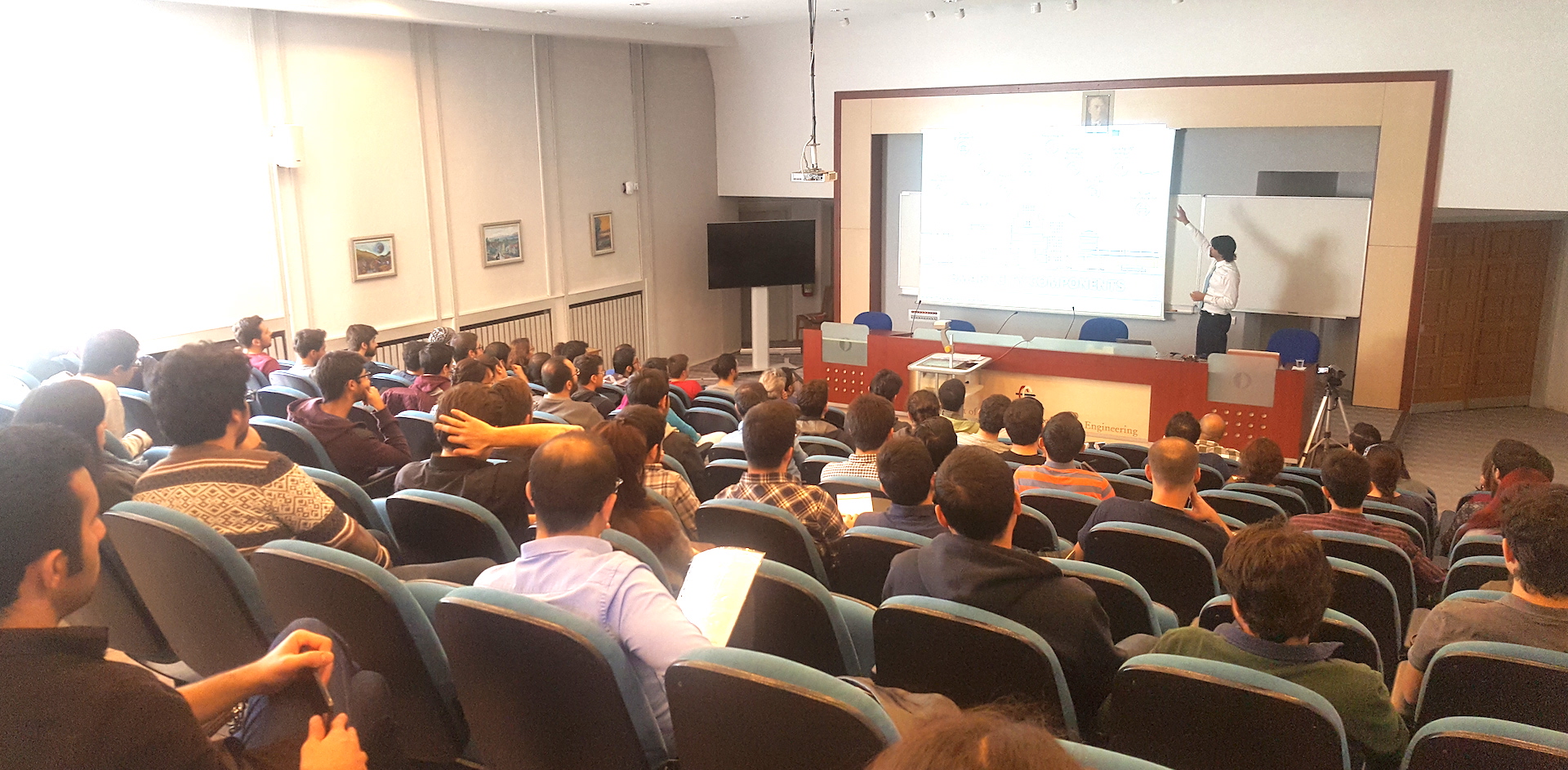
vTools Link: https://events.vtools.ieee.org/m/152899
24-27 September 2017: Fourth International EMC Conference (Attendance)
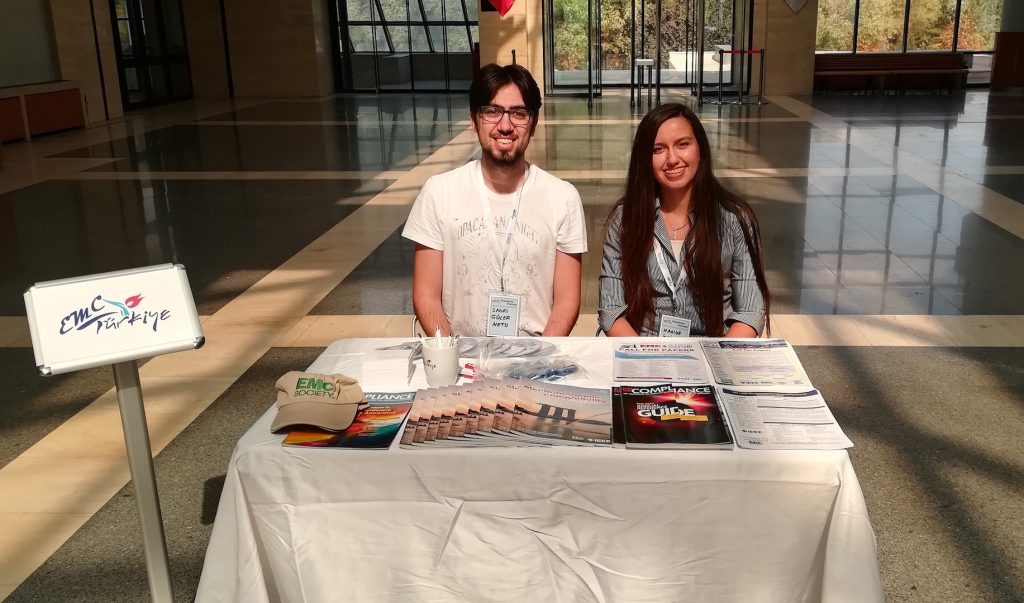
24 September 2017: IEEE-APS Distinguished Lecturer Short Course by Dr. Sudhakar Rao
Topic: “Advanced Antenna Systems for 21st Century Satellite Communication Payloads”
Location: Middle East Technical University, Ankara, Turkey
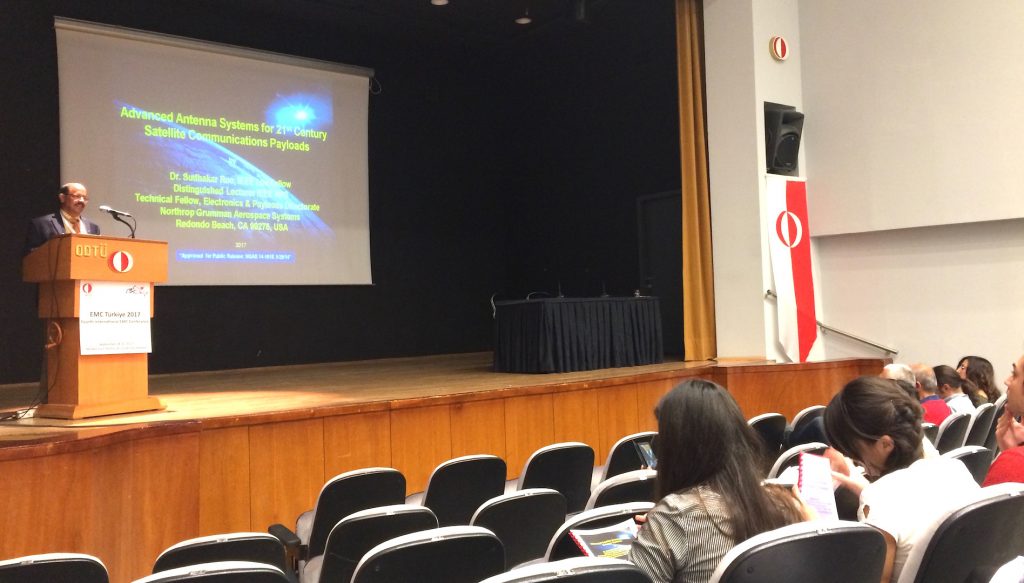
vTools Link: https://events.vtools.ieee.org/m/152898
26 May 2017 (13:40): IEEE AP/MTT/EMC/ED Turkey Seminar Series (S.12)
Speaker: Assoc. Prof. Alpan Bek, Middle East Technical University
Topic: “High Resolution Optical Microscopy and Spectroscopy Techniques in Biology”
Location: Middle East Technical University, Ankara, Turkey
Abstract: High resolution optical microscopy and spectroscopy used to be limited in the micrometer spatial resolution for about 3 centuries after development of the first microscopes in 17th century. The limiting factor behind such a long time of further advancement has ultimately been the diffraction limit of visible light. It was in late 20th century when technology has finally advanced beyond the limitation of diffraction to enable optical spatial resolution down to the nanometer. Nanometer dimension is the realm of large molecules of which maybe most interesting ones such as proteins are of biological origin. In this talk I will present the ideas behind breaking the diffraction limit and give an overview of several high resolution imaging and spectroscopy techniques in biological specimen analysis.
Bio: Alpan Bek has completed his BSc and MSc studies at Bilkent University Department of Physics. He has taken part in experimental research on optical properties of low dimensional systems and integrated optics under supervision of Prof. Atilla Aydinli. He has obtained his PhD degree from Ecole Polytechnique Federale de Lausanne (EPFL) while he conducted his PhD work at the Max-Planck Institute for Solid State Research in Stuttgart, Germany under supervision of Prof. Klaus Kern. He has constructed an optical microscope that can resolve structures down to 5 nm with visible light. He has had a post-doctoral stay at Ludwig Maximillian’s University of Munich (LMU) in the group of Prof. Jochen Feldmann and conducted research together with Prof. Thomas Klar on plasmonic systems. Afterwards he has moved to Cluster in Biomedicine (CBM) in Trieste, Italy to work together with Dr. Marco Lazzarino on tip enhanced Raman spectroscopy (TERS). In 2011 he has returned back to Turkey as a faculty member in Physics Department of Middle East Technical University. He is currently conducting research in the fields of plasmonic solar cells and nonlinear plasmonics as the leader of the Nano-Optics Research Group and as a member of The Center for Solar Energy Research and Applications (GÜNAM).
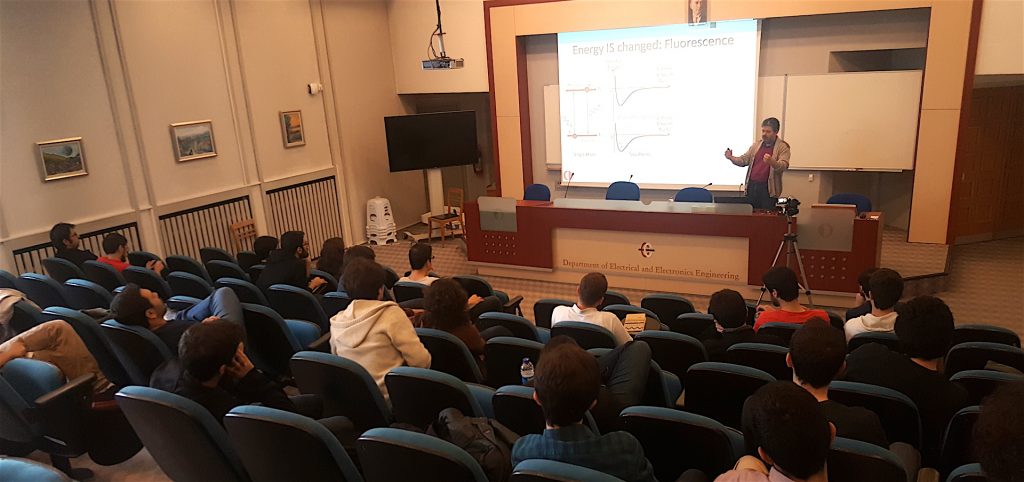
vTools Link: https://events.vtools.ieee.org/m/149037
12 May 2017 (13:40): IEEE AP/MTT/EMC/ED Turkey Seminar Series (S.11)
Speaker: Prof. Vakur B. Ertürk, Bilkent University
Topic: “Incomplete-Leaf Multilevel Fast Multipole Algorithm for Multiscale Electromagnetics Problems”
Location: Middle East Technical University, Ankara, Turkey
Abstract: Fast Multipole Method (FMM) is selected as one of the 10 algorithms with the greatest influence on the development and practice of science and engineering in the 20th century, and its multilevel version, Multilevel Fast Multipole Algorithm (MLFMA), is currently among the most widely used and powerful methods in computational electromagnetics (CEM) in addition to its use in other fields such as chemistry, biology, and physics applications. However, when scattering from multi-scale (electromagnetic) applications are considered, for instance electrically small and structurally complicated antennas on large platforms, MLFMA may become considerably inefficient or inaccurate originating from the fact that it deploys fixed-size boxes at each and every level of the corresponding tree structure, which is not suited when use of a multi-scale meshing (i.e., highly nonuniform) is inevitable.
In this talk, we will present our recent work on an efficient and versatile broadband MLFMA, which is capable of handling large multiscale electromagnetic problems with a wide dynamic range of mesh sizes. By invoking a novel concept of incomplete-leaf tree structures, where only the overcrowded boxes are divided into smaller ones for a given population threshold, versatility of using variable-sized boxes is achieved. Consequently, for geometries containing highly overmeshed local regions, the proposed method is always more efficient than the conventional MLFMA for the same accuracy, while it is always more accurate if the efficiency is comparable. Furthermore, in such a population-based clustering scenario, the error is controllable regardless of the number of levels.
Bio: Vakur B. Ertürk received the B.S. degree in electrical engineering from the Middle East Technical University, Ankara, Turkey, in 1993, and the M.S. and Ph.D. degrees from The Ohio-State University (OSU), Columbus, in 1996 and 2000, respectively. He is currently a Professor with the Electrical and Electronics Engineering Department, Bilkent University, Ankara. His research interests include the analysis and design of conformal antennas and arrays, wireless sensors for structural health monitoring, numerical techniques, printed circuits, scattering from and propagation over large terrain profiles. Dr. Ertürk served as the Secretary/Treasurer of the IEEE Turkey Section as well as the Turkey Chapter of the IEEE Antennas and Propagation, Microwave Theory and Techniques, Electron Devices and Electromagnetic Compatibility Societies. He was the recipient of the 2005 URSI Young Scientist and 2007 Turkish Academy of Sciences Distinguished Young Scientist Awards.
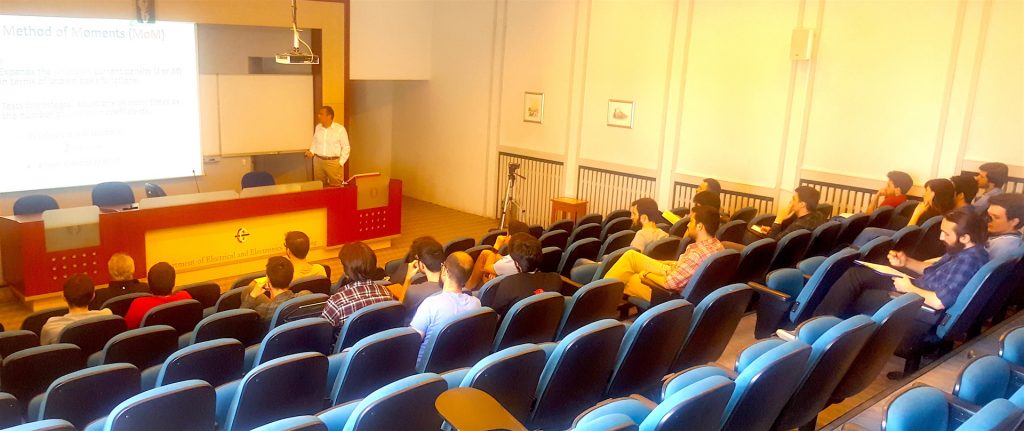
vTools Link: https://events.vtools.ieee.org/m/148810
5 May 2017 (13:40): IEEE AP/MTT/EMC/ED Turkey Seminar Series (S.10)
Speaker: Assoc. Prof. Hüsnü Emrah Ünalan, Middle East Technical University
Topic: “Transparent Contacts With Metal Nanowire Networks”
Location: Middle East Technical University, Ankara, Turkey
Abstract: Figure of merit transparency and sheet resistance values of the metal nanowire networks are very close, if not better, than those of commercially available transparent and conducting thin films, such as indium tin oxide (ITO). In addition, nanowire networks carry the prominent advantage of solution processability. In this presentation, I will talk about our efforts on the utilization of silver (Ag) and copper (Cu) nanowire networks as transparent contacts for polymeric light emitting diodes, solar cells and transparent heaters. Following their synthesis and purification, nanowires are deposited onto various substrates in the form of networks through spray coating. Surface roughness and long-term stability of the networks are carefully monitored, where the latter is a particularly important problem for Cu nanowires. Infiltration of a conducting polymer decreased the roughness associated with the networks so that they can be used as anodes in polymeric light emitting diodes. In order to eliminate the shading losses associated with conventional screen-printed finger electrodes in single crystalline silicon solar cells, networks were utilized as top contacts. Through the application of a post-deposition treatment for the formation of the ohmic contacts, a relative enhancement in conversion efficiency of 21% was obtained with respect to the reference cells. When used as transparent heaters, reproducible heating characteristics and uniform temperature distribution was obtained from the networks. The effect of nanowire density on the temperature profile, applied voltage as well as turn on/off characteristics were investigated.
Bio: Emrah Unalan received the BS degree in Metallurgical and Materials Engineering from Middle East Technical University, Turkey in 2002 and the MS and PhD degree in Materials Science and Engineering at Rutgers University, USA in 2004 and 2006, respectively. From 2006 to 2008, he was a Research Associate in Electrical Engineering Division in Engineering Department at University of Cambridge, UK. In 2008, he joined Department of Metallurgical and Materials Engineering, Middle East Technical University, where he is currently an Associate Professor. His research interests include synthesis of nanotubes/nanowires and their utilization in flexible, transparent, stretchable and textile integrated electronics and energy harvesting devices. The aim of his research is not only the utilization of nanomaterials for unforeseen applications through the fabrication of novel devices but also seeking possibilities for new device concepts and form factors. He is a member of Materials Research Society (MRS), American Chemical Society (ACS) and a recipient of the Turkish Academy of Sciences Young Scientist Award in 2009, The Scientific and Technological Research Council of Turkey (TUBITAK) Incentive Award in 2014, Science Academy Young Scientist Award in 2015.
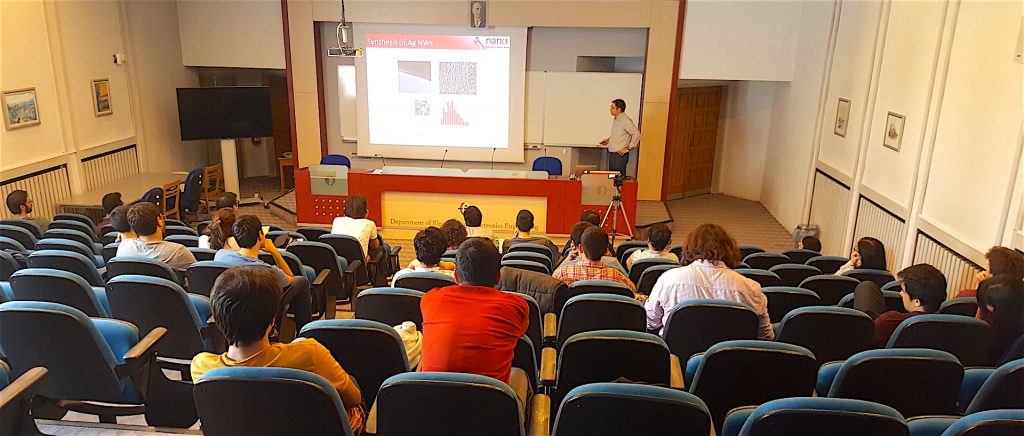
vTools Link: https://events.vtools.ieee.org/m/148627
2 May 2017 (13:40): IEEE AP/MTT/EMC/ED Turkey Seminar Series (S.9)
Speaker: Prof. Ibrahim Tekin, Sabancı University
Topic: “High Isolation Full Duplex Communication Antennas”
Location: Middle East Technical University, Ankara, Turkey
Abstract: Many technologies are being considered for efficient 5G communication. In-Band Full Duplex (IBFD) is one effective way to increase the spectral efficiency and the throughput of wireless communication systems by transmitting and receiving simultaneously on the same frequency band but the coupling (called Self Interference or SI) of transmit signal to its receiver is one major problem. IBFD operation can be realized successfully by suppressing this coupling or Self Interference (SI). The goal is to achieve high interport isolation for dual port antennas with minimum effect on radiation performance of antennas. In this talk, microstrip patch antennas which deploy different feeding techniques along with Self Interference Cancellation (SIC) circuits to get high interport isolation to enable such antennas for realization of IBFD wireless operation using single/shared antenna architecture will be presented.
Bio: Ibrahim Tekin received the B.S. and M.S. degrees from the Electrical and Electronics Engineering Department, Middle East Technical University, Ankara, Turkey, in 1990 and 1992, respectively, and the Ph.D. degree from The Ohio State University (OSU), Columbus, OH, USA, in 1997. He was with the Electrical Engineering Department, OSU, from 1993 to 1997. From 1997 to 2000,he was a Researcher with the Wireless Technology Laboratory, Bell Laboratories, Lucent Technologies, Murray Hill, NJ, USA. He is currently with the Electronics Engineering Program, Sabanci University, Istanbul, Turkey. He is also involved in various projects, including 77 GHz LNA and antenna design, RFIC design for WLAN systems, and antennas for full duplex systems. He has authored many scientific papers and patents on microwave and antennas area. His current research interests include RF and microwave circuit design and millimeter wave antennas and circuits. Dr. Tekin is a Senior Member of the IEEE Antennas and Propagation Society.
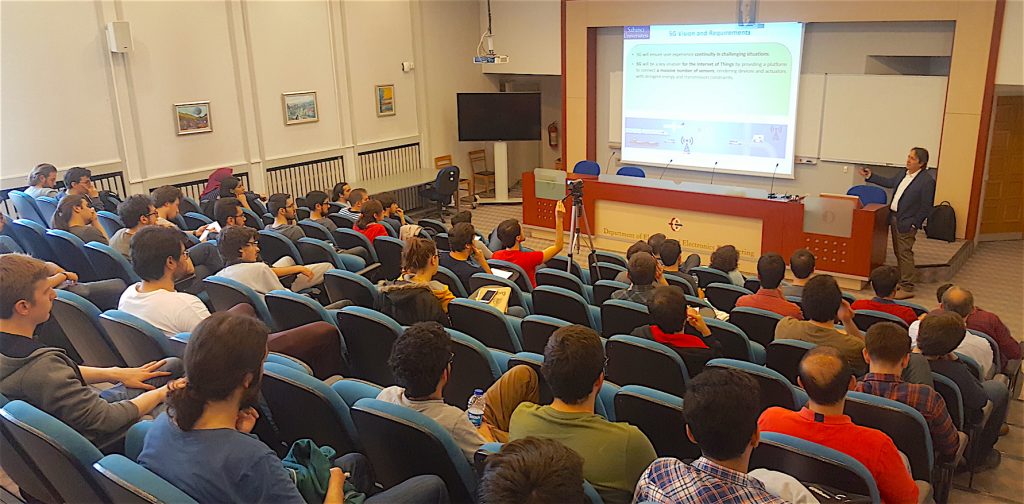
vTools Link: https://events.vtools.ieee.org/m/148577
28 April 2017 (13:40): IEEE AP/MTT/EMC/ED Turkey Seminar Series (S.8)
Speaker: Prof. İrşadi Aksun, Koç University (Co-Author: H. Serhat Tetikol)
Topic: “Understanding Surface Plasmon Polaritons (SPP) via Critical Study of Dispersion Relation – Complete Picture and Correct Interpretation”
Location: Middle East Technical University, Ankara, Turkey
Abstract: Dispersion relation for surface plasmon polaritons (SPPs) is a fundamental equation that has long been known. A common misconception in its solution is that either a complex frequency or a complex wave-vector can be used to account for losses in the system. We show that both frequency and wave-vector should simultaneously take complex values in order to fully account for the underlying physics represented by the dispersion relation, resulting in Dispersion Surface. Realizing that the dispersion surface is in fact a manifestation of a richly embroidered set of dispersion lines, which may be accessible by carefully selecting source and material properties, our results pave the way for the possibility of unprecedented engineering of resolution, confinement, group velocity and band-gap in structures supporting SPPs. Our results are also applicable to a larger class of waves in dispersive environments, and pose a major amendment to the conventional interpretation of dispersion.
Bio: M. İrşadi Aksun, professor of electrical and electronics engineering, is the vice president for research and development at Koç University. Dr. Aksun received his B.S and M.S degrees in Electrical and Electronics Engineering from Middle East Technical University, Turkey, and his Ph.D degree in Electrical and Computer Engineering from University of Illinois at Urbana-Champaign, U.S.A., in 1990. His research interests are: Computational EM and Optics, Antennas and Propagation, Nanophotonics. After completing postdoctoral training at University of Illinois at Urbana-Champaign, he joined the faculty of Electrical and Electronics Engineering at Bilkent University, and worked there until 2001. Then, he joined Koç University in 2001, served as Dean of Faculty of Engineering between 2004-2009, and has been serving in the capacity of Vice President for Research and Development since September 1, 2009. He has received “TÜBİTAK Incentive Award” in 1994, “The Best Professor Award” given annually by Bilkent students in 2001, “TÜBİTAK Science Award” in 2007, and become a principle member of Turkish Academy of Sciences in 2012.
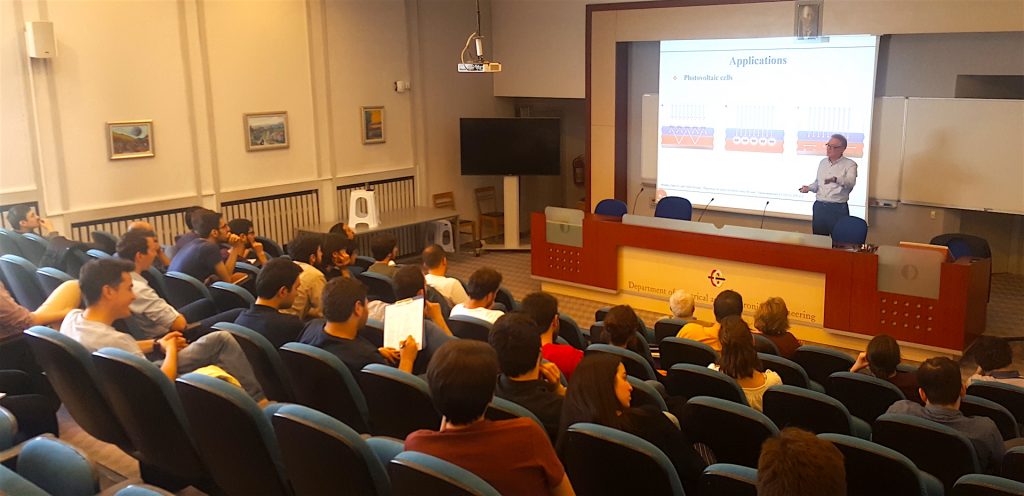
vTools Link: https://events.vtools.ieee.org/m/148542
21 April 2017 (13:40): IEEE AP/MTT/EMC/ED Turkey Seminar Series (S.7)
Speaker: Asst. Prof. Rohat Melik, TOBB-ETÜ
Topic: “Modulation of Ion Concentration In-Vivo”
Location: Middle East Technical University, Ankara, Turkey
Abstract: Our motion and behavior are as a result of the change of the cellular membrane potential. Therefore, by controlling the membrane potential in-vivo, we can control our motion and behavior. In our work, we applied extrinsic current and changed the ion concentration gradient in-vivo hence; changed the membrane potential in-vivo. Therefore, we proposed and developed two fundamental technologies: changing ion concentration gradient in-vivo and changing membrane potential in-vivo. We used these fundamental technologies for therapeutics of neurological disorders. Approximately 6 million people are paralysis in US (1.9%). Conventional Functional Electrical Stimulation (FES) aims to restore neurological functions such as standing, ambulation etc. However, there is no widely acceptable FES system because of high-energy expenditure and stimulation of nearby sensory nerves, causing pain. By using our novel electrochemical stimulation and blocking method, we modulated ion concentration around the sciatic nerve of a frog in-vivo using ion-selective membrane (ISM), hence; lowered the stimulation current therefore decreased the energy expenditure. We also lowered the blocking current as a result localized stimulation and reduced pain.
Bio: Dr. Melik is currently an Assistant Professor in the Department of Electrical and Electronics (EE) Engineering at TOBB University of Economics & Technology, Ankara, Turkey. He received B.S. degree in Electrical and Electronics Engineering (major) and in International Economics (minor) from Middle East Technical University (METU), Turkey in 2004. In his Ph.D. study, Dr. Melik has worked on smart orthopaedic implants for early-diagnostics of orthopaedic traumas. In 2010, he received his Ph.D. in Electrical and Electronics Engineering from Bilkent University, Turkey. He worked as a postdoctoral fellow in the Department of Electrical Engineering and Computer Science at Massachusetts Institute of Technology (MIT) in 2011-2012. Since 2013, he continues his career as an academic at TOBB University of Economics & Technology. His research interest is particularly in implantable electronics, which has clinical applications in real life especially for the therapeutics of neurological disorders. He is the recipient of Leopold B. Felsen Award for Excellence in Electromagnetics.
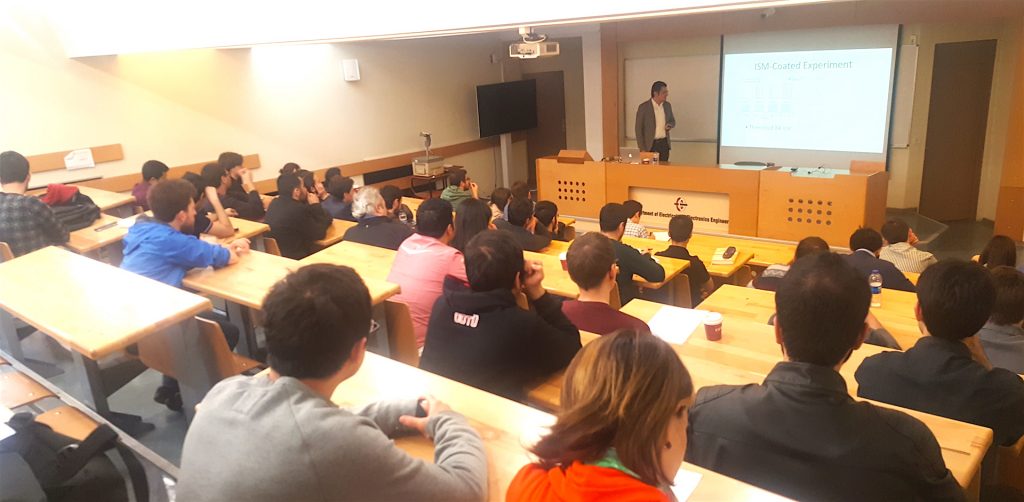
vTools Link: https://events.vtools.ieee.org/m/148404
14 April 2017 (13:40): IEEE AP/MTT/EMC/ED Turkey Seminar Series (S.6)
Speaker: Prof. Özlem Aydın Çivi, Middle East Technical University
Topic: “Reconfigurable Reflectarrays: Design, Analysis and Fabrication”
Location: Middle East Technical University, Ankara, Turkey
Abstract: Reflectarray antennas combine the advantages of both reflector and array antennas. Therefore, they offer low-loss, low-cost solutions for the high gain beam steering and beam shaping applications. In this talk, first the current progress and future perspectives regarding the design and analysis of reflectarrays will be discussed. Then, recent technological developments and techniques that are used to realize reconfigurability in reflectarrays will be presented.
Bio: Özlem Aydın Çivi received BSc, MSc and PhD degrees in 1990, 1992 and 1996 respectively in Electrical and Electronics Eng. Department of the Middle East Technical University (METU) in Ankara, Turkey. In 1997-1998 she was a visiting scientist at the ElectroScience Laboratory, Ohio State University. Since 1998, she has been with the Department of Electrical and Electronics Engineering, Middle East Technical University, where she is currently a Professor. Her research interests include multi-function antenna design, reconfigurable antennas/arrays, RF-MEMS applications, phased arrays and analytical, numerical and hybrid techniques in EMT problems especially fast asymptotic/hybrid techniques for the analysis of large finite periodic structures. She is author or co-author of more than 100 scientific publications. Since 1997, she has been a national delegate of the European Cooperation Actions COST260, COST284, COST-IC0603 on Antennas, and currently participates in COST-VISTA. She also participated in EU’s Network of Excellence on RF MEMS and RF Microsystems. Since 2004, she is a technical reviewer of the European Community for scientific projects in the fields of antennas and communication. Dr. Civi chaired, organized sessions and served in the Technical Program Committees at many International Conferences. In particular, she was actively participated in the organization of 2011 URSI General Assembly, Co-chair of MEMSWAVE2012 and chair of URSI Turkey 2016. She is a Senior Member of IEEE, member of EuRAAP, board member of EuMA Topical Group on RF MEMS, board member of ESoA, and vice chair of URSI Turkish National Committee. She is an Associate Editor of the IEEE Transactions on Antennas and Propagation.
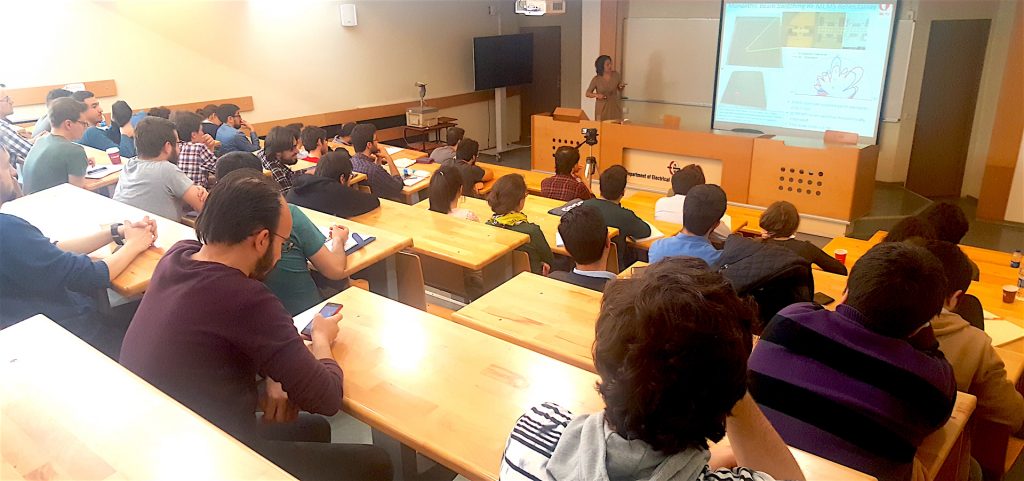
vTools Link: https://events.vtools.ieee.org/m/148291
7 April 2017 (13:40): IEEE AP/MTT/EMC/ED Turkey Seminar Series (S.5)
Speaker: Dr. Mehmet Çiydem, Engitek Ltd.
Topic: “Mobile Base Station Communication Antennas”
Location: Middle East Technical University, Ankara, Turkey
Abstract: Mobile communication systems have penetrated into every aspects of people’s lifes from defense, security, healtcare, agriculture, transportation, big data and printed and social media etc. Increasing need for higher and higher data rates put immense demand on channel capacity, bandwidth and QoS resulting in new methods and technologies. This talk discusses the basic principles, evolution of cellular communication technologies and current trends towards 5G. Talk also focuses on base station antenna technologies starting from the early prototypes to advanced antennas such as smart, MIMO antennas and massive MIMO antennas of 5G.
Bio: Mehmet Ciydem was born in 1971 in Ankara, Turkey. He received his B.Sc., M.Sc. and Ph.D. degrees all in electrical engineering from Middle East Technical University (METU), Ankara, Turkey with high honors. After working in defense industry (Aselsan, Havelsan, TAI) for many years, he founded Engitek Ltd company in 2009 where he is president. He is an associate professor of electromagnetic theory and communications lecturing occasionally in several universities (Bilkent Univ., Gazi Univ., Karatay Univ., Hacettepe Univ., and Army War Academy). His research interests are in the areas of electromagnetics, wave propagation, antennas, RF/microwave engineering, radar and communication systems.
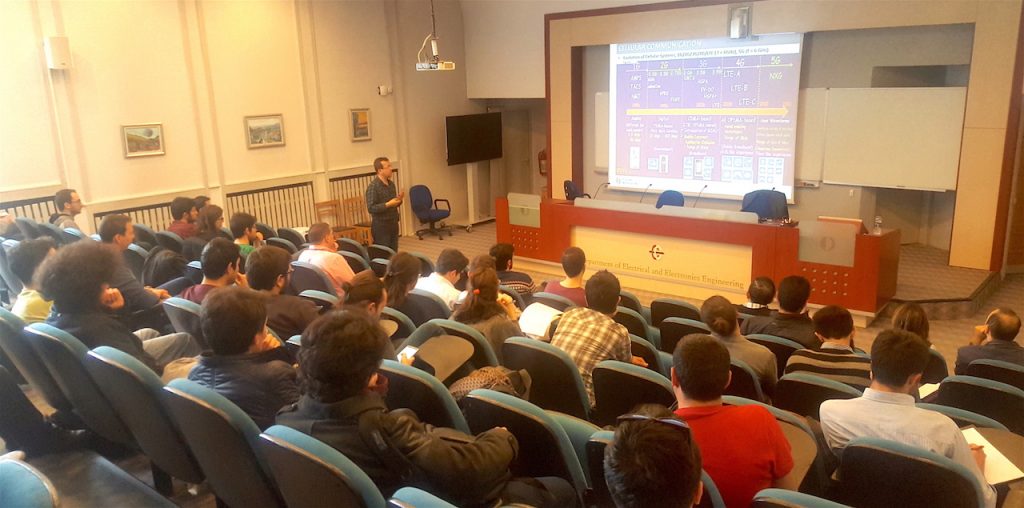
vTools Link: https://events.vtools.ieee.org/m/148147
17 March 2017 (15:00): IEEE AP/MTT/EMC/ED Turkey Seminar Series (S.4)
Speaker: Asst. Prof. Hüseyin Arda Ülkü, Gebze Technical University
Topic: “Quantum Corrected Plasmonic Field Analysis using Time Domain Surface Integral Equation Solvers“
Location: Middle East Technical University, Ankara, Turkey
Abstract: When two structures are within sub-nanometer distance of each other, quantum tunneling effect becomes relevant. These effects cannot be accurately modeled by classical electromagnetic solvers. In this study, an auxiliary tunnel that connects the structures is introduced to model the quantum tunneling effect. The quantum model of the tunnel is obtained using density functional theory (DFT) computations, which account for the atomic structure of materials. The plasmonic fields on the resulting connected structure are analyzed using a time domain surface integral equation solver. Time domain samples of the dispersive medium Green function and the dielectric permittivities are computed from the analytical inverse Fourier transform applied to the rational function representation of their frequency domain samples. Numerical results, which demonstrate the effect of the quantum correction on the transient electromagnetic interactions, will be presented.
Bio: Hüseyin Arda Ülkü received the B.S., M.S., and Ph.D. degrees in Electronics Engineering from Gebze Technical University (GTU), Kocaeli, Turkey, in 2006, 2008, and 2011, respectively. Between 2007 and 2016, he was a Research and Teaching Assistant with the Electromagnetic Fields and Microwave Division, Department of Electronics Engineering, GTU, where he is an Assistant Professor since 2016. Between 2011 and 2015, he was a Postdoctoral Fellow with the Division of Computer, Electrical, and Mathematical Sciences and Engineering (CEMSE), King Abdullah University of Science and Technology (KAUST), Thuwal, Saudi Arabia. His research interests include the field of computational electromagnetics with a focus on time-domain integral equations.
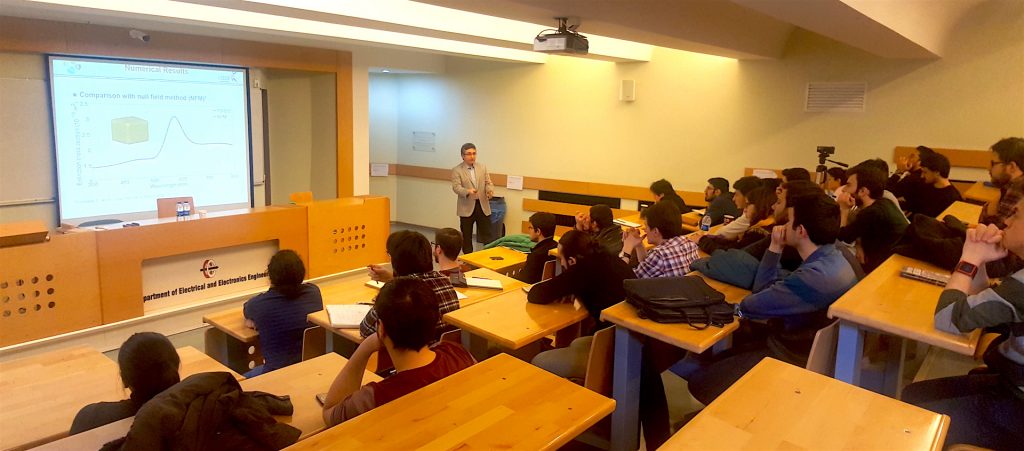
vTools Link: https://events.vtools.ieee.org/m/147863
10 March 2017 (15:00): IEEE AP/MTT/EMC/ED Turkey Seminar Series (S.3)
Speaker: Prof. Gökhan Çınar, Eskişehir Osmangazi University
Topic: “Wiener-Hopf Analysis of Baltic HVDC Submarine Power Cable Measurement”
Location: Middle East Technical University, Ankara, Turkey
Abstract: In this talk, the Wiener-Hopf analysis of TEM wave reflection along a coaxial waveguide with a step discontinuity on the outer wall will be presented. The proposed geometry is a basic model of the Baltic HVDC submarine power cable measurement, which was done recently in Sweden. The analysis is carried out rigorously by applying direct Fourier transform and reducing the problem into the solution of a modified Wiener-Hopf equation of the second type. The solution for the field terms are determined in terms of infinite number of unknown coefficients which satisfy an infinite set of linear algebraic equations. These unknown coefficients are solved numerically and the effect of area ratio on the reflection coefficient is determined.
Bio: Gökhan Çınar received BS and MS degrees in electronics and telecommunication engineering from Istanbul Technical University in 1998 and 2001, respectively. He received his Ph.D. degree in electronics engineering from Gebze Institute of Technology in 2004. He held the assistant and associate professorship positions at Gebze Institute of Technology between 2004 and 2015. He started working at Electrical and Electronics Engineering department of Eskişehir Osmangazi University in 2015 where he was entitled as a full professor in 2016. He was with the Linnaeus University, Sweden between September 2009 and December 2010 as a visiting research for a collaboration, which is still going on, on electromagnetic modeling of submarine power cables and flow acoustics. His research interests include mathematical modeling in general and rigorous methods applied to electromagnetic and acoustic scattering problems, such as Wiener-Hopf and mode-matching techniques.
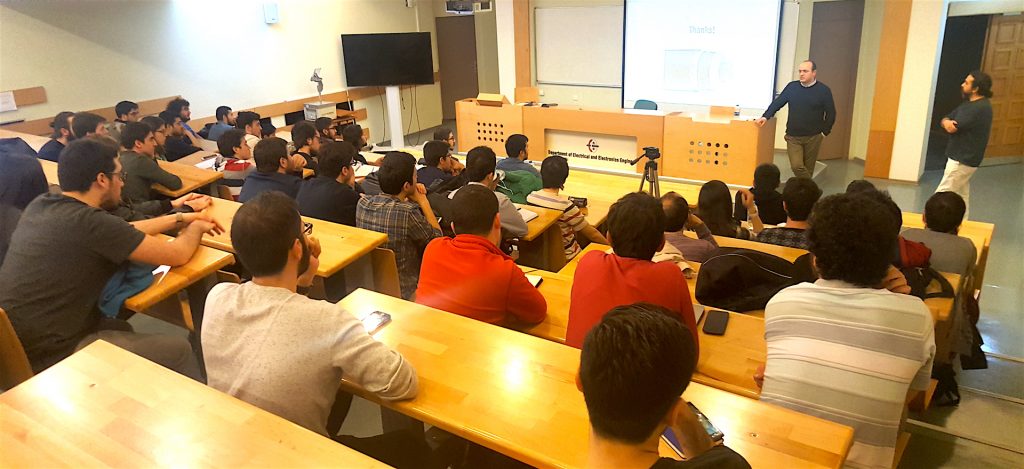
vTools Link: https://events.vtools.ieee.org/m/147503
3 March 2017 (15:00): IEEE AP/MTT/EMC/ED Turkey Seminar Series (S.2)
Speaker: Prof. Ayhan Altıntaş, Bilkent University
Topic: “Design and Implementation of an Electromagnetic Wireless Passive Structural Health Monitoring System”
Location: Middle East Technical University, Ankara, Turkey
Abstract: Structural health monitoring (SHM) is an area which aims to ensure prevention or detection of damage in structures and protection of human life via observation of certain damage indicators. In SHM, one of the most important damage indicators is the strain forming on the steel reinforcing bars (rebars) embedded inside the concrete. This strain can slowly develop over time, or, can suddenly occur due to an overload such as an earthquake. In this study, a novel wireless passive sensing system is presented for detecting and measuring the level of strain and relative displacement in structures.
Bio: Prof. Ayhan Altıntaş received BS and MS degrees from Middle East Technical University, Ankara, Turkey, and Ph.D. degree from Ohio State University, all in electrical engineering, in 1979, 1981, and 1986, respectively. He is a professor of Electrical and Electronics Engineering and is the director of Communication and Spectrum Management Research Center (ISYAM) at Bilkent University. He is the recipient of IEEE Third Millennium Medal 2000, Alexander von Humboldt Research Fellowship 1998, TÜBİTAK (Scientific and Technical Research Council of Turkey) Research Award 1996. At present, he is the President of URSI National Committee. Dr. Altıntaş’s research interests are in electromagnetics, antennas and propagation.
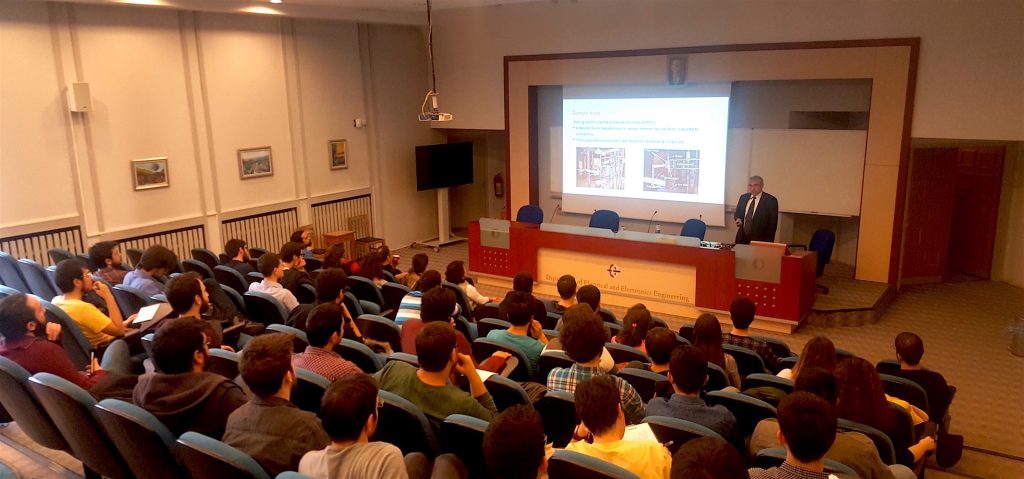
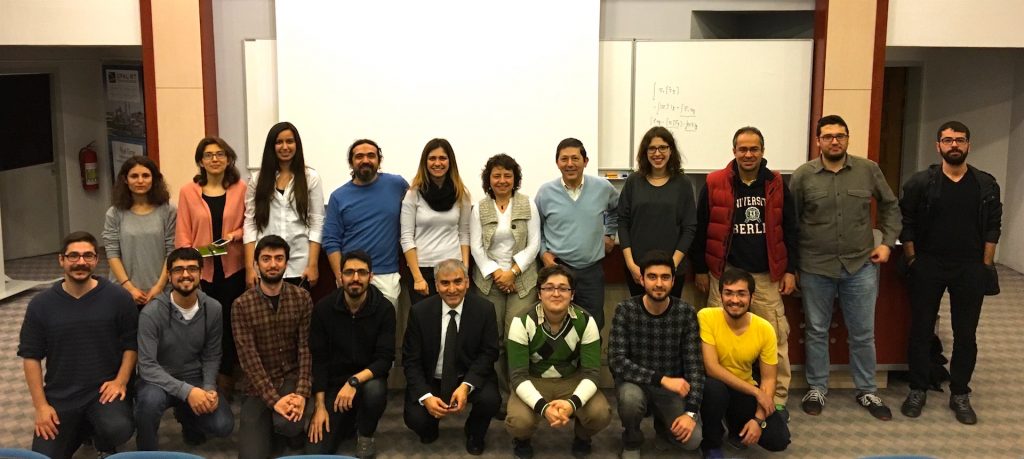
vTools Link: https://events.vtools.ieee.org/m/147196
24 February 2017 (13:40): IEEE AP/MTT/EMC/ED Turkey Seminar Series (S.1)
Speaker: Assoc. Prof. Fatih Dikmen, Gebze Technical University
Topic: “Construction of Efficient Wave Scattering Algorithms in 2D with Integral Equation Formulations”
Location: Middle East Technical University, Ankara, Turkey
Abstract: Boundary integral equations emerging for solutions of homogeneous Helmholtz equation under Dirichlet and Neumann boundary conditions will be under consideration. They model 2D monochromatic electromagnetic wave scattering phenomena, polarization of which are classified according to the transverse 2D plane as TM and TE. The scatterer is a perfectly conducting obstacle with smooth boundary, and excited by incident electromagnetic waves of the mentioned polarizations above, which are considered in both EFIE and MFIE. The issues and notions for implementation of an efficient algorithm to obtain the solution with high accuracy and with guaranteed convergence will be discussed.
Bio: Assoc. Prof. Fatih Dikmen is currently holding his tenure position in Gebze Technical University, Electronics Engineering Department, after his entitlement for the degree in October 2015. He earned the bachelor of science degree from İstanbul Technical University, Electrical Engineering Department, in 1993. He was graduated from the institution that he is working for now, but as a research assistant and with the name then, Gebze Institute of Technology, Electronics Engineering Department, as master of science in 1998 and as a PhD in 2004. In the next 18 months, he participated at Bilkent University, Computational Electromagnetics Research Group as a postdoc researcher before starting his lecturer career back in Gebze in 2006, which lasted till 2016 before earning his current position. His research interests and objectives are directed to semi-analytical methods, as well as direct numerical methods in computational electromagnetics. The talk is a review of his current research supported by TUBİTAK 3001 project grant which he is a director of and is a collaborative work with CEMMETU, under supervision of its director Assoc. Prof. Özgür Ergül. He likes to name his newborn research group as LABNUANCE (Laboratory for Numerical and Analytical Computations in Electromagnetics).
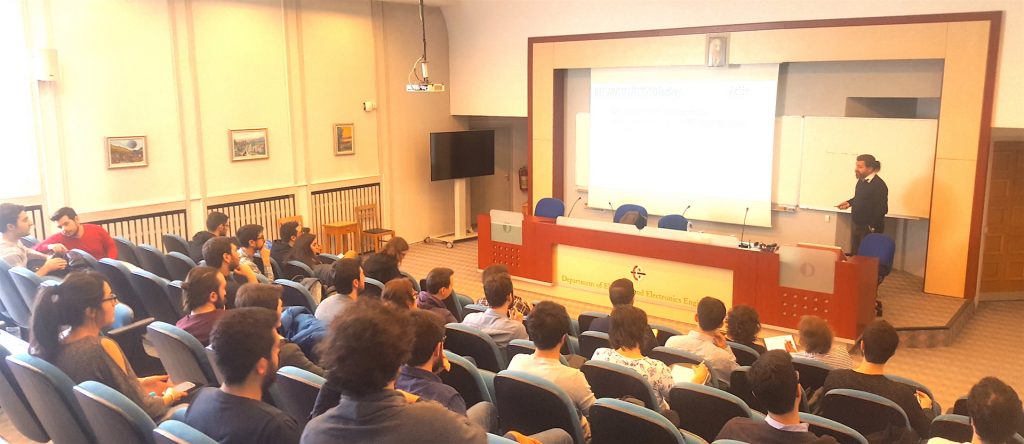
vTools Link: https://events.vtools.ieee.org/m/147107
